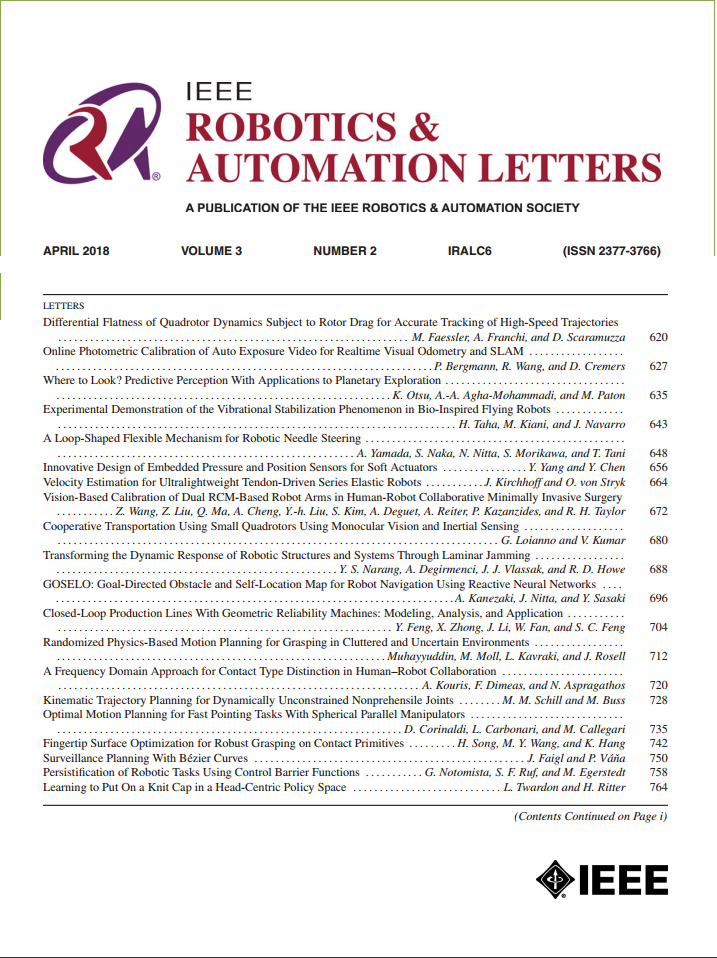II-NVM: Enhancing Map Accuracy and Consistency With Normal Vector-Assisted Mapping
IF 4.6
2区 计算机科学
Q2 ROBOTICS
引用次数: 0
Abstract
SLAM technology plays a crucial role in indoor mapping and localization. A common challenge in indoor environments is the “double-sided mapping issue”, where closely positioned walls, doors, and other surfaces are mistakenly identified as a single plane, significantly hindering map accuracy and consistency. To addressing this issue this letter introduces a SLAM approach that ensures accurate mapping using normal vector consistency. We enhance the voxel map structure to store both point cloud data and normal vector information, enabling the system to evaluate consistency during nearest neighbor searches and map updates. This process distinguishes between the front and back sides of surfaces, preventing incorrect point-to-plane constraints. Moreover, we implement an adaptive radius KD-tree search method that dynamically adjusts the search radius based on the local density of the point cloud, thereby enhancing the accuracy of normal vector calculations. To further improve real-time performance and storage efficiency, we incorporate a Least Recently Used (LRU) cache strategy, which facilitates efficient incremental updates of the voxel map. Thenvm:用法向量辅助映射增强地图精度和一致性
SLAM技术在室内测绘和定位中起着至关重要的作用。在室内环境中,一个常见的挑战是“双面映射问题”,即紧密定位的墙壁、门和其他表面被错误地识别为单个平面,严重阻碍了地图的准确性和一致性。为了解决这个问题,本文介绍了一种SLAM方法,该方法使用法向量一致性来确保准确的映射。我们增强了体素地图结构,以存储点云数据和法向量信息,使系统能够在最近邻搜索和地图更新期间评估一致性。这个过程区分表面的正面和背面,防止不正确的点对面约束。此外,我们实现了一种自适应半径kd树搜索方法,该方法根据点云的局部密度动态调整搜索半径,从而提高了法向量计算的精度。为了进一步提高实时性能和存储效率,我们采用了最近最少使用(Least Recently Used, LRU)缓存策略,该策略促进了体素地图的有效增量更新。该代码作为开源发布,并在模拟环境和真实室内场景中进行了验证。实验结果表明,该方法有效地解决了“双面映射问题”,显著提高了映射精度。此外,我们已经开发并开源了第一个专门为“双面映射问题”量身定制的模拟和真实世界数据集。
本文章由计算机程序翻译,如有差异,请以英文原文为准。
求助全文
约1分钟内获得全文
求助全文
来源期刊

IEEE Robotics and Automation Letters
Computer Science-Computer Science Applications
CiteScore
9.60
自引率
15.40%
发文量
1428
期刊介绍:
The scope of this journal is to publish peer-reviewed articles that provide a timely and concise account of innovative research ideas and application results, reporting significant theoretical findings and application case studies in areas of robotics and automation.
 求助内容:
求助内容: 应助结果提醒方式:
应助结果提醒方式:


